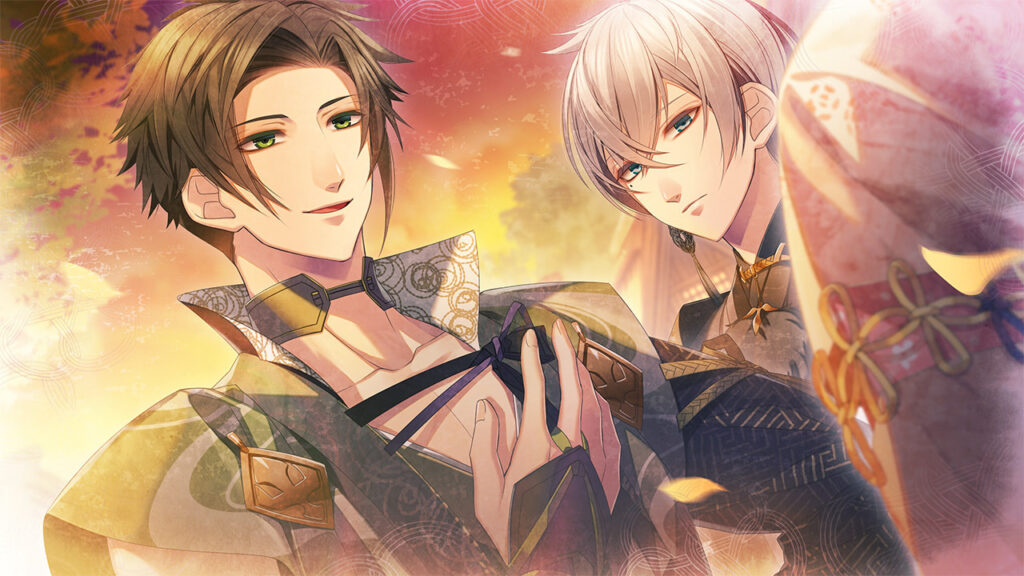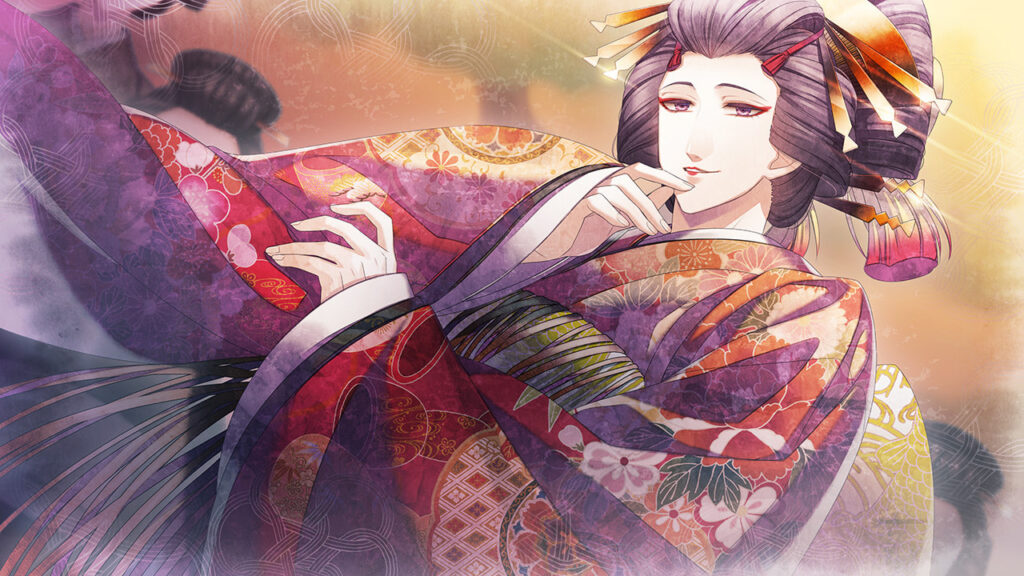Winter’s Wish: Peaceful Romantic Adventure in a Fantasy Edo Period
- Developer: Otomate
- Publisher: Idea Factory, Aksys Games
- Release date: 18th May 2023
- Genre: Adventure, Otome, Visual Novel
- Platforms: Nintendo Switch
- Reviewed on: Nintendo Switch
- Game Supplied by: Publisher
Winter’s Wish: Spirits of Edo Review
Visual novel games may not make it onto many gamers’ lists of games to play, but they certainly hold a special place in the hearts of gamers who have played some of the best of the genre, such as Steins Gate or Psycho-Pass Mandatory Happiness (Psycho Pass Mandatory Happiness Review – Total Gaming Addicts). With the portability of the Nintendo Switch and some of the best developers in the genre making games for the system, it’s a natural match for visual novel heaven!
Winter’s Wish: Spirits of Edo is Idea Factory/Design Factory’s latest release in this genre, and even though it’s classed as an otome game, it still has a wide enough appeal for other types of gamers to enjoy at some level. If you are unsure what the term otome means, it is literally translated as “maiden game”, and they are story-based games, targeted towards younger women, generally with the aim to develop a romantic relationship alongside the main storyline.
As this game is a visual novel, there is little I can disclose about how the story unfolds without giving away spoilers but the story synopsis of the game is;
“The first year of the Kyoho era. The land is ruled by the eighth shogun Yoshimune Tokugawa. Repeated incidents caused by monsters in the town of Edo upset and frightened the people so the Tokugawa shogunate established the “Oniwaban” to maintain public order and secure the town. Seasons pass—to year 11 of the Kyoho era.
A girl in a village far from Edo has the power to see “black Threads” before every catastrophe, which causes the panicked villagers to drive her away into the snowy mountains. One day, a young man from the Oniwaban appears before her. This is a story in which a girl encounters “non-humans,” and learns about love.”
You play as a young woman named Suzano, and her ability to read the threads of those around her garners the attention of the local Shogun. He would like to be able to harness her power with the help of his undercover Oniwaban to keep the peace and defeat monsters. The Oniwaban is like the secret service/MI6. They work under the cover of an alias in the town of Edo to keep an eye on things.

However, not all of the inhabitants of Edo are human. You are soon introduced to characters who have a humanoid form, but are actually called “Formfolk”. These Formfolk people were actually birthed from humans loving a tool they used, be it a pitchfork or inro (a small case to carry medicine and other items in) so much that it magically turns into a human.
The Oniwaban members themselves are neither human nor formfolk but are vessels that have their emotions somewhat suppressed to be better at their job. Ironically, it’s these very Oniwaban that Suzano has her romantic encounters with, which is at odds with their suppressed feelings. In one scene one of the Oniwaban says something that could be construed by Suzano as flirting, but a lot of the Oniwaban are oblivious to these comments.
Suzano has also lost her parents, and part of the game’s narrative is Suzano discovering more about herself, her parents, and where she came from. Winter’s Wish has multiple branching storylines to uncover, so you’ll need to play multiple times to discover the full story and experience the multiple endings available. Initially, it appears that the game has at least seven different endings, but there are more. It will roughly take five to seven hours to get to the end of each story branch, and in total there are around 60 hours of gameplay to unlock.
As an example of the kinds of narrative branching you’ll experience, the first decision Suzano has to make is which of the three districts of Edo to work in first. In each of these districts are two Oniwaban she has to work with. These choices can have a significant effect on how the story unfolds. If you make sure to save often, you can easily go back to that junction and choose another route, however, to fully unlock each character, you have to finish their arc and then start all over again. Fortunately, the game helps you by allowing you to skip to the next choice, so it is not a chore to revisit a point and choose something else.
I enjoyed the game, as I’m a big fan of historical fiction and tales based upon the Edo period of Japan, but there’s also historical accuracy in the settings. You will come across phrases such as “mon”, which was a type of currency used during the Era, and learn that 12 to 14 mon could buy you a bowl of noodles! Details like this really helped develop the world and gave authenticity to the game’s dialogue.
As there is a spiritual aspect to the game, this adds a new dimension (quite literally) to what could have been an average story. Despite being an otome game, the romance of the game is quite subtle, and there is nothing steamy or of an adult, mature nature. It’s a safe game for teenagers or a young audience to play, as the game’s general feel is cute and cozy. Even though there are bad endings in the game, they are not traumatic ones that have plagued the reputation of the visual novel genre (Some visual novel bad endings are just cruel, yes looking at you Code: Realize – Guardian of ReBirth -)
With very little in the way of action in the game, and a lot of text to read, it’s important that the graphics and clarity of the game are excellent, and indeed they are, even in the handheld mode on the Nintendo Switch. The artwork is interesting to look at, and the character designs and backgrounds of locations are beautifully rendered. Winter’s Wish also has a simple-to-navigate menu and control system, which is handy when you want to pause the moment and remove the text to look at the artwork, for example, or check the backlog of a conversation.

Lastly, the music accompanying the game is a very important aspect, as apart from reading and looking at the artwork, the music, and audio are essential in conveying the mood of the scene being played out. Soft soothing piano music with a hint of authentic traditional Japanese flutes and percussion provides a lilting ambience, and the various soundtracks you can unlock were extremely pleasant (I’ve been listening to them with a smile on my face as I’ve typed this review), but the few in-game sound effects were a little slapdash and unprofessional. An example that had both me and my daughter rolling with laughter each time we heard it was when someone entered a room there would be the sound of footsteps. Rather than sounding like a shoe-shod human footstep, these footsteps sounded more like a duck slapping its webbed foot down in a short sprint – Unintended, but funny all the same.
Summary
All in all, Winter’s Wish: Spirit of Edo is an excellent visual novel if just a bit too basic for people who have experienced much more intricate and complex visual novels before. Unfortunately, the plotlines were too predictable, and no characters stood out, which meant there was a lack of excitement. Some visual novel games I’ve played have captivated me, compelling me to keep playing, but with Winter’s Wish: Spirit of Edo, I didn’t get that same sense of urgency.
Despite this, I really enjoyed being immersed in the interesting and unique story. It is a beautifully crafted and rendered world, with very relaxing and amiable music to chill out with. Fans of visual novel games, and younger female gamers especially, may enjoy this one, but it’s not one I’d openly recommend if I was trying to introduce someone to the genre.

